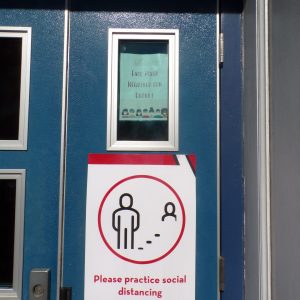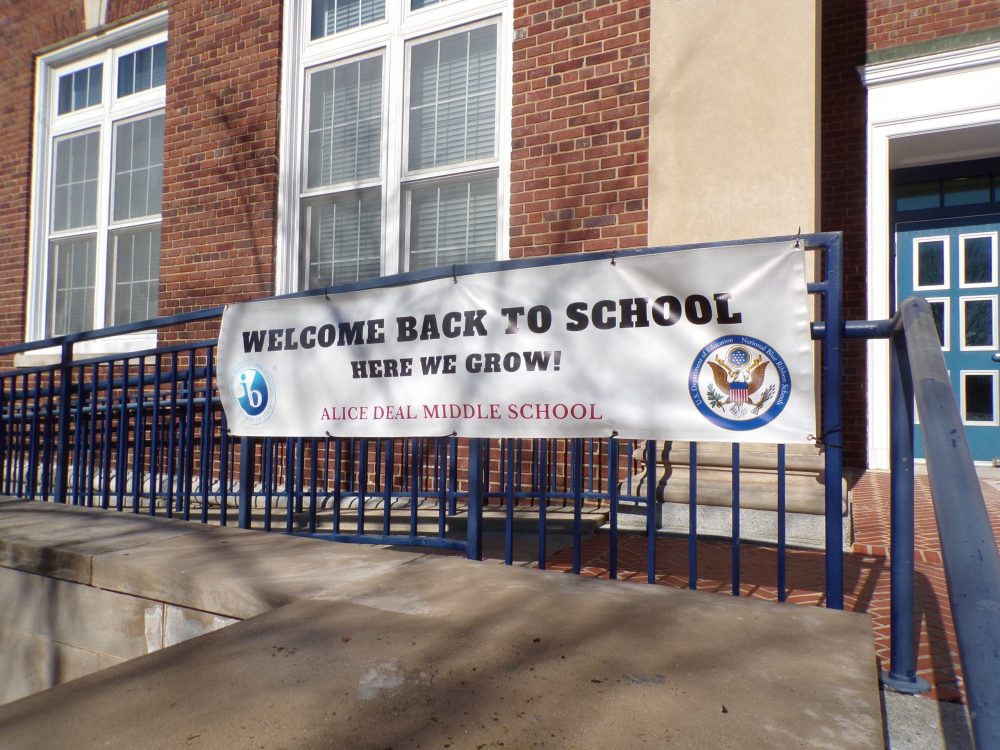President Joe Biden’s $130 billion school reopening plan focuses on making schools safer for teachers and students, although returning to school remains a contentious and difficult issue.
Reopening the majority of K-8 schools within his first 100 days in office is a key part of the president’s $1.9 trillion “American Rescue Plan” passed by the House on Friday on a party-line vote and now under consideration in the Senate.
“We can do this if we give the school districts, the schools themselves, the communities, and the states the clear guidance they need, as well as the resources they need that they can’t afford right now because of the economic dilemma we are in,” Biden said in January.
Supporters of the rescue measure will need every one of the 50 Democratic senators to vote for it. Under a procedural process known as reconciliation, a tie-breaking vote by Vice President Kamala Harris vote would allow the package to pass by a simple majority vote.

Although congressional Republicans also are supportive of returning kids to school, many do not support Biden’s $1.9 trillion relief plan.
Senate Minority Leader Mitch McConnell, R-Kentucky, said in a statement after the House vote that Democrats “jammed through a bill that even liberal economists and editorial boards say is not well targeted to this stage of the fight.”
“More than a third of its spending, including more than 90% of the K-12 school funding, would not even go out this fiscal year,” he said.
The back-to-school plan calls for more COVID-19 testing and transportation, additional cleaning and sanitizing services, protective equipment, and ventilation systems in schools. School districts could also use funds to take additional safety measures such as:
- Reducing class sizes so students and teachers can maintain social distance;
- Hiring more janitors and implementing mitigation measures;
- Ensuring every school has access to a nurse;
- Hiring counselors to support students as they transition back to the classroom;
- Closing the digital divide that has amplified inequalities during the pandemic;
- Providing summer schools for students who have lost learning time;
- Preventing cuts to state pre-k programs.
The COVID-19 Educational Equity Challenge Grant will also be funded by the Biden plan, said Christian Unkenholz, spokesman for Rep. Anthony Brown, D-Largo. The grant will support state, local and tribal governments in working with teachers and families to respond to COVID-related educational challenges.
“This is a question of justice and equity,” Brown said. “Without this aid, our schools, students and educators will be left to fend for themselves, potentially further delaying the return to in-classroom instruction and leaving kids behind. That’s unacceptable.”
The COVID-19 pandemic has particularly hurt lower-income students, Black and Latino students, and students with disabilities, according to the U.S. Department of Education.
The pandemic also has led to increased absences, poor learning outcomes, more hungry kids, and more social isolation.
Research on disrupted instruction shows that the cumulative learning loss for students by the end of the 2020-2021 school year could equate to five to nine months on average, said Lora Rakowski, director of communications for the Maryland Department of Education.
“Many students rely on our school system for food,” Joe Weedon, a member of the Washington Teachers’ Union, told Capital News Service. “(Our schools) assure they have safe places so they can focus on their work.”
Thousands of Washington students returned to school on Feb. 2 as part of the city’s public schools’ expansion of in-person classroom learning. Twenty-three million dollars was used to prepare buildings for the return to schools, Weedon said, although he said he still has serious concerns about the readiness of a number of facilities.
Many District of Columbia schools have not yet released data about the quality of their air systems, so it is unknown if the buildings meet the nation’s air release guidelines, Weedon said. Teachers are also only just beginning to receive vaccinations, meaning very few individuals have immunity from COVID-19 at this point.
With hybrid-learning, teachers will be asked to do a lot more work, as they will have to teach partially from home and partially at school – a change that they are not used to, Weedon said. He added that the District’s current return-to-school is not a return to normal, but a return to the safety of their school buildings.
“We’d all love a return to normal, but we are still in a pandemic,” Weedon said.
Maryland Gov. Larry Hogan, a Republican, also has submitted a $1.5 billion supplemental budget focused on education.
“This supplemental budget provides further support for the safe reopening of Maryland schools,” Hogan said. “I want to commend all the teachers, administrators, parents, and public health officials who are doing everything they can to give Maryland students the chance to get back in the classrooms safely.”
The budget includes:
- $931 million to support local school systems and targeted assistance for the safe reopening of public schools.
- $434 million in additional funding for the Supplemental Nutrition Assistance Program (SNAP) and the Pandemic EBT program. This program is intended to help families in Maryland purchase food while schools remain closed due to COVID-19
- $128 million to support the state’s Child Care Scholarship program, including almost $60 million to help support licensed child care providers recover from the impact of the pandemic.
- $35 million from the Governor’s Emergency Education Relief Fund to support the safe reopening of nonpublic schools.
- $20 million from the same fund to support community colleges, private institutions of higher education, and competitive innovation grants.
By the end of March, 18 out of 24 Maryland school systems will be providing an opportunity for in-person instruction at least two days a week, in elementary, middle and high school grade levels, Rakowski said.
Carroll, Worcester, Calvert, Caroline, Cecil, Dorchester, Frederick, Queen Anne’s, St. Mary’s, Somerset, Talbot, Washington and Wicomico Counties are among the local school systems currently providing in-person, hybrid instruction.
Four local school systems are not opening for all grade levels by the end of March, Rakowski said.
Harford County schools are open for elementary K-5 for two days, but only one day for middle and high school students. Baltimore City will open for elementary, K-5 and grades six and nine by the end of March. Charles County has a five-phase reopening plan and will start phase five on March 22, allowing special populations of students to meet in-person four days a week. Prince George’s County will open some of its schools for the month of April.
As more schools re-open, the Maryland State Education Association has developed a checklist of expectations for every school building, utilizing CDC, Department of Health, and Department of Education health and safety guidelines.
Cheryl Bost, MSEA president and a Baltimore County elementary school teacher, said she believes accelerating the availability of vaccines to teachers, as well as following safety guidelines like adequate ventilation and social distancing, are key to protecting the health of students, educators, and families.
“We all want to be in school, safely and sustainably, with our students,” Bost told CNS. “That’s been our goal all along.”


You must be logged in to post a comment.